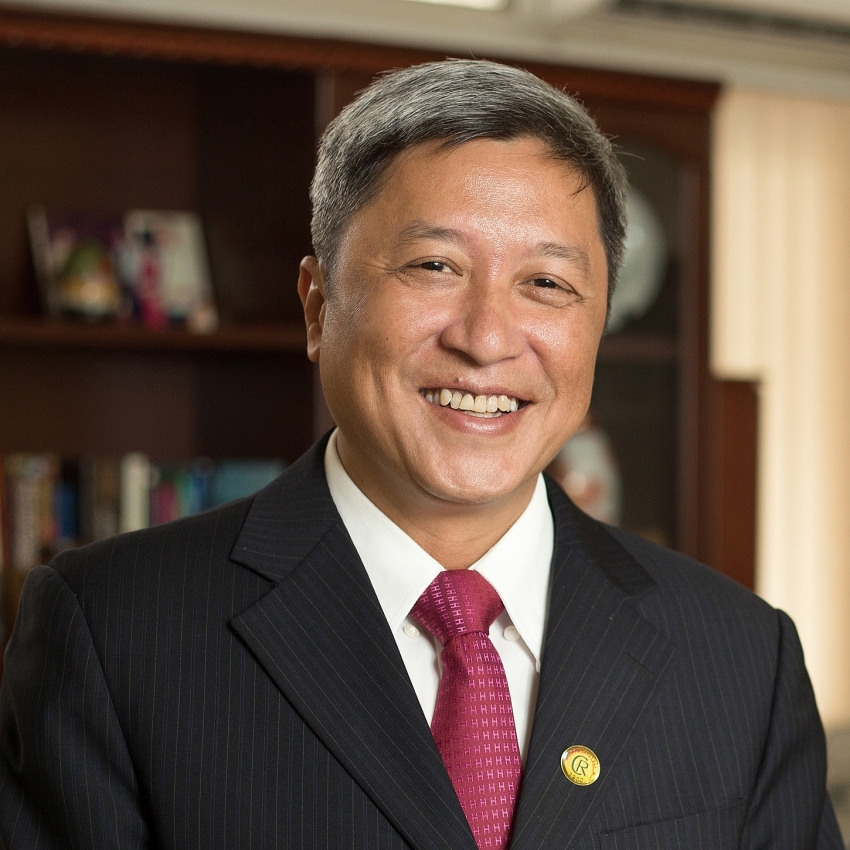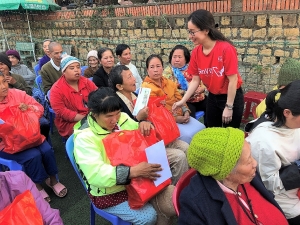Digital health development: More thumb-ups for businesses ready
 |
| Nguyen Truong Son, Deputy Minister of Health |
A number of domestic and international businesses are interested in developing technology solutions to support the sustainable development of the healthcare sector. Does the sector have any supporting policies to encourage this line of investment?
The policies and regulations on the application of IT in the healthcare sector have been gradually improved. The Ministry of Health (MoH) has ranked first in the country for many years in this aspect by creating consistent and stable policies to facilitate businesses and investment in the sector.
The MoH has issued five circulars guiding the technical requirements like the conditions for medical activities in the network environment; electronic data transfer in the management and payment of medical examination costs and treatment with health insurance; and remote medical activities. Additionally, the circulars clarify the criteria for IT application in medical examination and treatment establishments as well as for electronic medical records.
The MoH has issued the E-Government Architecture Framework 2.0. This is the sector’s overall vision to be perused by businesses planning to invest in the field. The ministry has also approved the scheme on applying IT and developing smart healthcare in 2019-2025. The MoH also issued guidance on the development and implementation of an information system for the management of commune, ward, and township health facilities, as well as issued professional documentation to guide the implementation of non-cash payments for medical services.
Moreover, the MoH is also compiling economic and technical norms for IT application in healthcare to include in the structure of health service prices to ensure that the funding for IT application will remain sustainable.
The MoH is determined to pioneer the implementation of the government’s digital transformation programme. The draft programme on digital transformation in the health sector includes solutions to develop the digital economy in the sector with a focus on developing businesses and strengthening digital transformation in governance and services among health facilities, thus enhancing the experience and benefits of people, businesses, and health workers.
Most economic sectors are heading to digital transformation and the medical sector is not an exception. What are the highlights in the sector’s digital transformation journey so far, and what comes next?
The health sector is embracing digital transformation, as seen by the gradual application of technologies such as the Internet of Things (IoT), AI, VR, cloud computing, and big data in the operation of healthcare facilities and supervisory bodies.
A clear example of this is the telehealth scheme, which is a practical step towards realising the government’s Digital Transformation Programme. Some hospitals have been piloting the application of AI in cancer treatment and in making clinical decisions, while the application of chatbots is becoming wider to provide consultation services.
In the prevention and fight against COVID-19, technology has been used to facilitate healthcare-related administration work, such as the Vietnam Health Declaration or Bluezone apps.
In the future, the MoH will continue to build and complete the legal framework for digital transformation to provide standards, technical regulations, and norms on IT application.
It will also develop a national medical database to store and manage databases in the sector with a view to combining them.
Another initiative is to digitalise the healthcare and disease prevention system, including the building and implementation of electronic health records. Our goal is to increase electronic health records to cover 95 per cent of the population by 2025. Along with this, the sector will accelerate the computerisation of medical station operations, apply AI and smart technologies in disease prevention, environmental protection, food safety and nutrition monitoring, and HIV/AIDS prevention and fight. In conjunction, applications will be developed to provide reliable information on the prevention and treatment of diseases.
Meanwhile, hospitals will be positioned to pioneer digital transformation. Electronic health records will be deployed at all health facilities to replace paper-based health records and non-cash payment will be accepted for hospital fees. At the same time, AI applications will be strongly developed in diagnosis and treatment activities.
The MoH will deploy the electronic administration system for the medical sector. IT applications will also be encouraged to boost management and other procedures while shifting the MoH, departments of health, and other units towards paperless operations. At the same time, there will be a strong focus on developing and applying electronic transactions, electronic authentication, and electronic offices in agencies and units.
The ministry will also intensify online public services and connect them with Vietnam’s and the ASEAN Single Window to provide level 4 online public health services for all administrative procedures by 2020. Enhancing connectivity and digital records will make the collection and compilation of electronic health statistics far easier, providing a better, more accurate overview of the health sector activities across the country.
Similarly, completing the national medical database and applying smart technology to analyse medical activities will bolster Vietnam’s capacity to forecast health conditions and diseases in the community and to determine the appropriate policies.
What orientations does the health sector have related to sustainable development? What key programmes and action plans will the Ministry of Health (MoH) focus on to achieve Vietnam’s sustainable development goals?
Decision No.622/QD-TTg from 2017 puts the MoH in charge of 11 among Vietnam’s 115 sustainable development goals and assigns it to work with other ministries and agencies on the 15 relevant targets. The ministry has assessed the situation, the validity of the goals and targets, looked at local and international experiences, as well as held conferences to gather ideas from experts working at international organisations, managers, and localities to issue an action plan for the health sector in Decision No.3929/QD-BYT dated June 28, 2018.
The action plan includes specific tasks and responsibilities for units under the MoH as well as for municipal and provincial departments of health. It also works with relevant ministries and agencies, effectively implementing the goals and tasks assigned by Decision 622.
The policy orientations on sustainable development in the health sector are:
First, focusing on completing the organisation of the health sector and the planning ofanational network of health facilities; transferring some facilities from the MoH to local authorities to reduce their number under the ministry’s management; completing the model of provincial-level centres for disease control (CDC) and the model of multi-functional medical centres which directly manage grassroots health facilities; and developing central-level control disease units and areas as well as management agencies for drugs, beauty products, food, and medical equipment in the central and provincial areas.
Second, increasing the capacity of preventive healthcare to deal with urgent situations and public health incidents to ensure health security; nurturing grassroots health facilities, preventive healthcare, and people’s health improvement; decreasing death rates among mothers and children, as well as children malnutrition rate, especially in remote and difficult areas; and narrowing the development gap in health condition between regions and areas.
Third, conducting comprehensive renovation of the entire system to increase health service quality and meet the growing demand and people’s satisfaction; expanding telehealth and telemedicine applications to increase high-quality health access for the people, thus easing overloads in central hospitals; closely coordinating traditional and modern medicine, and paying attention to the development of medical ingredients at home; step by step providing comprehensive call for patients; developing some intensive medical centres, and high technical services; and combining tourism with healthcare.
Fourth, renewing population-related work: Shifting the focus of Vietnam’s population policy from family planning to population development, paying due attention to the quality, size, structure, and distribution of the population on a rational basis, maintaining replacement fertility, reducing the rate of increase in sex imbalance at birth, reducing disparities in health between regions, and fully tapping into the country’s the golden population, and taking initiatives in adapting to an ageing population structure.
Fifth, fully revamping human resources training, granting practising certificates in accordance with international practice, building exam centres to issue certificates of international standards, renewing the management and use of human resources, and improving medical ethics.
Sixth, intensifying scientific research; applying high-technology in the prevention, early diagnosis, and treatment of diseases; accelerating digital transformation; enhancing the research and manufacturing of medical devices, biologicals, medical supplies, medicines, and vaccines to improve Vietnam’s readiness for the prevention, fight, and treatment of diseases.
Seventh, working on the medical insurance roadmap towards national coverage; strongly renovating financial mechanisms; investing in infrastructure and medical devices to elevate grassroots healthcare facilities and medical units in remote and underprivileged areas, as well as hospitals with no income; and building and completing the policies to attract investment in health facilities.
Moreover, the health sector will continue to improve transparency in the price of socialised services, drugs, and medical devices as well as the licensing process to prevent suboptimal and skewed procurement.
What the stars mean:
★ Poor ★ ★ Promising ★★★ Good ★★★★ Very good ★★★★★ Exceptional
Themes: Healthcare Platform
- DKSH to acquire Vietnamese healthcare distributor Biomedic
- Two national hospitals expand capacity with new facilities
- Vietnam moves to enhance disease prevention, equity, and sustainability
- Vietnam unites to tackle major causes of disease and death
- Health Innovation Hub: accelerating health equity through digital healthcare innovation
Related Contents
Latest News
More News
- First members of Danang International Finance Centre revealed (December 22, 2025 | 17:39)
- Human-centred governance seen as key to AI development (December 19, 2025 | 18:19)
- Top 10 notable events of Vietnam’s industry and trade sector in 2025 (December 19, 2025 | 14:00)
- Tungsten surges to 12-year high as world enters a new 'black gold' race (December 18, 2025 | 17:27)
- Vietnam’s coffee exports set new record despite price pressures (December 18, 2025 | 17:13)
- Garment and textile sector seeks new growth after volatile year (December 18, 2025 | 17:01)
- VinSpeed and Siemens strengthen cooperation for high-speed rail development (December 18, 2025 | 16:53)
- High-tech adoption for TH true MILK (December 18, 2025 | 13:39)
- Takeda supports health resilience amid climate change challenges (December 18, 2025 | 12:39)
- Mondelez Kinh Do - a chapter of purpose-led leadership in Vietnam (December 18, 2025 | 09:44)





 Tag:
Tag:


























 Mobile Version
Mobile Version